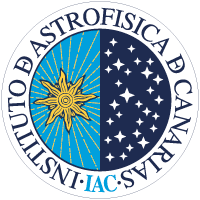Sp7@EWASS2015
Science with large spectroscopic surveys of Galactic OB stars: getting ready for Gaia
Organizers: S. Simón-Díaz (IAC, Spain) & F. Martins (LUPM, France)
Date: 22 June 2015, La Laguna, Tenerife, Spain
In the last decade, several spectroscopic surveys of Galactic OB stars have been conducted independently by different groups (GOSSS, OWN, IACOB, CAFE-BEANS, NoMaDs, GES, MiMeS, BOB). The scientific exploitation of this unique observational material, using the most modern tools, is currently under way and will without any doubt quantitatively change our view of the properties (temperature, gravities, abundances...) and evolution of massive stars. However, the picture will not be complete until we have access to accurate distances (hence being able to compute luminosities, stellar radii, masses, and ages).
The Gaia mission will provide the needed key to open the frontiers of a new era in the study of Galactic OB stars. Successfully launched in 2013 december 19, the first data release (not yet including distances) is planned for summer 2016.
Hence time is ripe to:
- establish synergies between the various on-going spectroscopic surveys of Galactic OB stars;
- discuss the best strategy to share all available observational information about Galactic OB stars in preparation for the Gaia era;
- identify the best tools to extract information about rotation, stellar and wind parameters and abundances from large samples of Galactic OB stars; and
- identify the interplay between current spectroscopic surveys and Gaia in the context of the understanding of massive stars properties and evolution.
This special session of the EWASS2015 aimed at gathering experts in observations, analysis, and modelling of massive OB stars and key speakers involved in the Gaia mission with this scope. The list of invited and contributed talks can be found below.
Session I: Past, on-going, and future surveys of Galactic OB stars: getting ready for Gaia
- Massive stars as seen by Gaia (Yves Frémat, invited)
- Galactic OB stars spectroscopic surveys (J. Maíz Apellániz, invited)
- UV spectroscopy, the companion to optical surveys of OB-stars (M. Garcia)
- Sharing and exploiting spectroscopic data in the Virtual Observatory era (E. Solano)
- The OWN survey: a high resolution spectroscopic monitoring program of Southern Galactic O and WR stars (R. H. Barbá)
Session II: Modern tools and techniques for the investigation of Galactic OB stars
- Modern tools and techniques for the quantitative spectroscopy of OB stars (M.A. Urbaneja, invited)
- Quantitative Spectroscopic Analysis of the grid of O-type standards: an example of first synergies between modern spectroscopic surveys of Galactic OB Stars (G. Holgado)
- GOSSS, GES, IACOB and OWN: Comparison of results of different surveys and perspectives for WEAVE and MEGARA (S. Rodriguez)
- The Galactic O Vz stars revisited in the framework of the GOSS Survey (J. Arias)
- Spectral analysis of B-type stars in the Gaia-ESO survey (T. Morel)
- Modern tools for the modelling of stellar evolution of massive stars (F.N.R. Schneider, invited)
- The spectroscopic Hertzsprung-Russell diagram of Galactic massive stars (N. Castro)
- Checking the physics of rotational mixing with the VLT FLAMES survey (R. Simoniello)
Session III: Open questions in our knowledge of Galactic OB stars in the Gaia context
- Open questions in our knowledge of the evolution of Galactic OB stars (G. Meynet, invited)
- Open questions in our knowledge of the physical properties of Galactic OB stars (J. Puls, invited)

